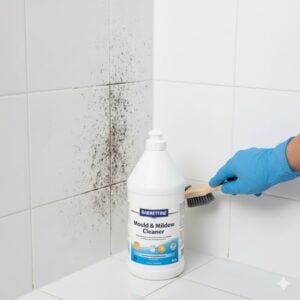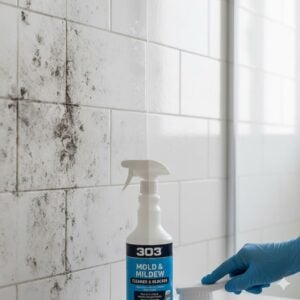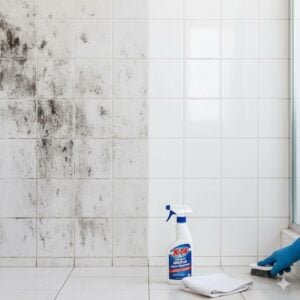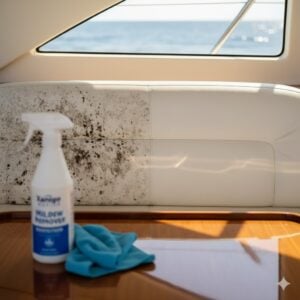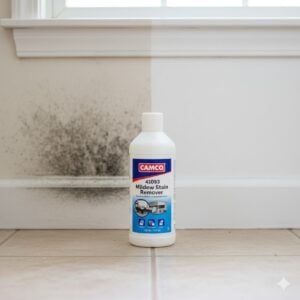Welcome to our latest dive into the world of healthy, clean living. Today, we’re tackling a topic close to many homeowners’ hearts: mold prevention treatments. Mold isn’t just an unsightly issue—it can also pose serious health risks. Understanding how to prevent it is crucial for maintaining a safe and comfortable living space. That’s why we’re here to share five top-notch strategies to keep your environment mold-free. Let’s embark on this journey together, ensuring your home remains a sanctuary against mold threats.
Table of Contents
Toggle#1. Proper Ventilation and Humidity Control

Proper ventilation and humidity control are your first line of defense in the battle against mold in your home. Mold thrives in moist environments, making areas with high humidity and poor airflow prime locations for mold outbreaks. Managing these factors can significantly reduce the risk of mold growth, ensuring your living spaces remain healthy and comfortable.
Ventilation plays a crucial role in controlling indoor humidity levels. Ensuring that your home is adequately ventilated helps to circulate air and reduce moisture levels. Kitchens, bathrooms, and laundry rooms are hotspots for moisture accumulation due to activities like cooking, bathing, and drying clothes. Installing exhaust fans in these areas can be a game-changer. These fans expel humid air from inside your home to the outside, preventing moisture from settling on surfaces where mold could grow.
For instance, after taking a hot shower, the bathroom becomes a steamy environment. Without proper ventilation, this moisture condenses on walls and ceilings, creating a perfect habitat for mold. An exhaust fan, ideally vented to the outdoors, helps keep the bathroom dry and mold at bay.
But ventilation isn’t the only player; controlling humidity is equally critical. The ideal indoor humidity level to prevent mold growth is between 30% and 50%. Humidity levels above this range encourage mold growth, while levels below can affect air quality and comfort. A hygrometer, a device that measures humidity, can help monitor indoor air moisture levels.
Dehumidifiers are a potent tool for managing humidity, especially in naturally damp areas like basements. These devices pull moisture from the air, collecting it as water and significantly reducing the indoor humidity level. For larger homes or areas with chronic dampness problems, investing in a whole-house dehumidifier system might be the best approach. This system integrates with your home’s heating, ventilation, and air conditioning (HVAC) system, providing consistent humidity control throughout your living space.
Another simple yet effective strategy is to keep indoor plants in check. While they add beauty and improve air quality, plants can also release moisture into the air. Be mindful of the number of plants within your living spaces and consider placing them in well-ventilated areas to mitigate their impact on indoor humidity.
Proper insulation and weather-stripping of windows and doors can also play a significant role in maintaining controlled humidity levels. These measures prevent moisture from entering your home due to outdoor weather conditions, further reducing the risk of mold growth.
Lastly, making a habit of opening windows daily, even for a few minutes during colder months, can significantly improve indoor air circulation, reducing moisture and preventing mold growth. This practice, combined with the strategic use of fans to promote air movement, can keep indoor humidity at optimal levels.
By implementing these strategies, you can create an environment that is not conducive to mold growth, protecting your home and health. Regularly monitoring and adjusting your home’s ventilation and humidity levels can make a substantial difference in maintaining a mold-free space.
#2. Use of Mold-Resistant Products
Incorporating mold-resistant products into your home’s design and maintenance routine is a proactive approach to mold prevention. These products are engineered to resist moisture absorption, thereby reducing the likelihood of mold growth. From construction materials to household finishes, a wide range of mold-resistant options can help safeguard your space against the damaging effects of mold.
One of the cornerstone materials in mold prevention is mold-resistant drywall. Unlike traditional drywall that contains paper, mold-resistant drywall uses fiberglass facings, which significantly reduce the material’s susceptibility to mold since fiberglass does not provide a food source for mold spores. This type of drywall is especially beneficial in moisture-prone areas of your home, such as bathrooms, kitchens, and basements.
Similarly, mold-resistant paint contains antimicrobial agents that prevent the growth of mold on painted surfaces. Applying this paint is a straightforward measure to protect walls and ceilings in every room, particularly in areas where high humidity levels are common. It’s a practical solution for both new paint jobs and as an update to existing walls, providing an extra layer of defense against mold infestation.
Flooring choices can also impact mold prevention. Options like ceramic tile, laminate, and specially treated wood flooring offer resistance to moisture and, consequently, mold growth. These materials are less likely to absorb moisture compared to traditional carpeting, which can trap and retain moisture, creating a favorable environment for mold. Selecting mold-resistant flooring materials is particularly crucial in basements, bathrooms, and kitchens where water exposure is more frequent. Caption for Illustration: “Mold-Resistant Flooring Options for Every Room”
In addition to these structural components, consider using mold-resistant caulk in areas susceptible to moisture, such as around bathtubs, sinks, and windows. This type of caulk prevents water seepage into cracks and crevices, which is a common precursor to mold growth.
For homeowners planning new construction or renovations, mold-resistant insulation is another vital product to incorporate. This insulation is treated with fungicides that discourage mold growth, providing an extra layer of protection in the fight against mold. It’s particularly useful in external walls and attics, where temperature differentials can condense moisture, creating potential mold hotspots.
Utilizing these mold-resistant products can dramatically reduce the risk of mold in your home, contributing to a healthier and more durable living environment. While the initial cost might be higher than conventional materials, the long-term benefits of preventing mold growth and the potential health risks and property damage it can cause make these investments worthwhile.
#3. Regular Inspection and Maintenance
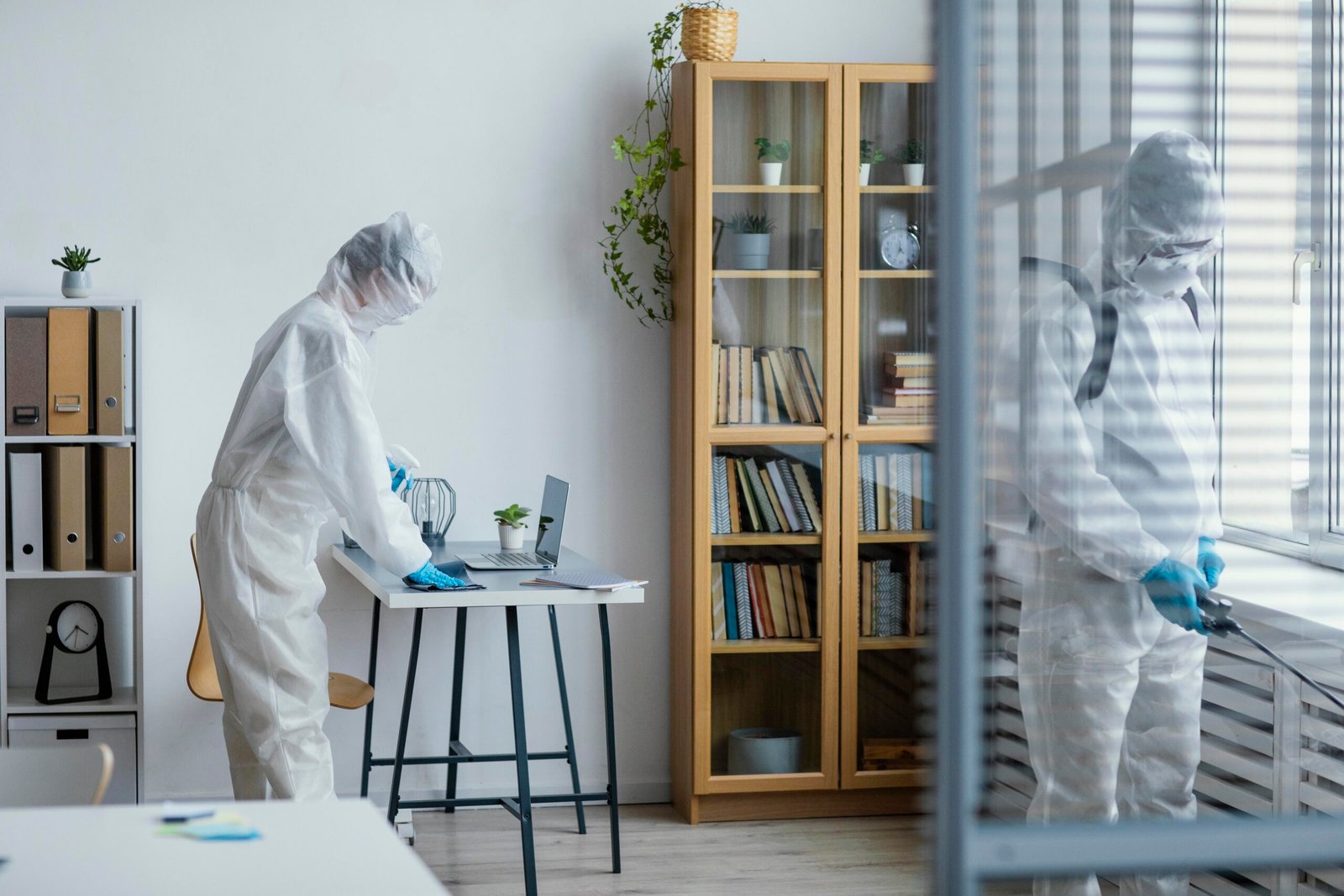
Regular inspection and maintenance are crucial for preventing mold growth in your home. This proactive approach involves periodically checking areas prone to moisture and addressing any issues before they become breeding grounds for mold. Establishing a routine for inspecting your home allows you to identify potential problems early, saving time, money, and health concerns down the line.
The first step in your inspection routine should focus on common moisture sources, such as bathrooms, kitchens, and basements. These areas are particularly vulnerable to mold due to their frequent exposure to water. Look for signs of condensation on windows, pipes, and walls, which can indicate high humidity levels. Additionally, inspect shower curtains, bathmats, and under sinks for any signs of mold growth, as these locations are often overlooked.
Another critical area to monitor is your home’s foundation and roofing. Check the exterior of your home for any signs of water damage or leaks that could allow moisture to enter. Pay special attention to the roof, ensuring that shingles are intact and gutters are clear and properly directing water away from the foundation. Inside, examine attic spaces and crawl spaces for any signs of leaks, insulation damage, or condensation.
Your HVAC system also plays a significant role in controlling indoor humidity levels and preventing mold. Regularly replacing air filters and having your system serviced by a professional can ensure it operates efficiently, reducing moisture in the air. Inspect air ducts for any signs of moisture or mold growth, as these can spread spores throughout your home.
Water appliances such as water heaters, washing machines, and dishwashers should be checked for leaks and proper operation. Even small leaks can create a moist environment conducive to mold growth. Ensure that hoses and connections are secure and in good condition.
Landscaping and outdoor drainage also impact indoor moisture levels. Ensure that the ground slopes away from your home’s foundation to prevent water accumulation. Check outdoor faucets and sprinkler systems for leaks that could contribute to foundation moisture.
Regular maintenance is equally important. Cleaning gutters, downspouts, and drains prevents water buildup that can lead to mold. Inside, use dehumidifiers in damp areas and ensure that exhaust fans in bathrooms and kitchens are functioning correctly to reduce humidity.
Lastly, be proactive about addressing any issues uncovered during your inspections. Small repairs, such as sealing leaks or improving ventilation, can prevent significant mold problems in the future. Keeping a maintenance log can help you track inspections and repairs, ensuring nothing is overlooked.
By incorporating regular inspection and maintenance into your home care routine, you can create an environment that is less inviting to mold. This not only protects your property but also your health, providing peace of mind that your living space remains safe and comfortable.
#4. Deep Cleaning Practices
Deep cleaning practices go beyond the routine dusting and vacuuming to target the nooks and crannies where mold spores can settle, multiply, and thrive. Engaging in deep cleaning regularly can significantly reduce the potential for mold growth by eliminating the dust and organic matter that mold spores feed on. This comprehensive approach to cleaning involves a more thorough examination and treatment of areas prone to moisture and mold.
Start with the high-humidity areas of your home, such as the bathroom and kitchen, where mold is most likely to develop. In the bathroom, tackle all surfaces with an antimicrobial cleaner, paying special attention to grout lines, shower curtains, and under-sink areas. These spots can harbor mold spores that, if left unchecked, can quickly turn into larger mold problems. For kitchen spaces, clean appliances inside and out, ensuring that refrigerator drip pans and seals are mold-free and that stovetops and ovens are free of food particles that can attract moisture and mold.
Upholstered furniture and carpets should also be included in your deep cleaning regimen. These can trap moisture and provide a breeding ground for mold. Use a steam cleaner to kill any potential mold spores that have settled in the fabric. Additionally, consider using a dehumidifier in rooms with upholstered furniture or heavy carpets to keep humidity levels in check.
Don’t overlook your home’s ventilation systems during your deep clean. Air ducts can accumulate dust and moisture, promoting mold growth that affects indoor air quality. Hiring a professional to clean your HVAC system and ductwork can prevent mold spores from circulating throughout your home.
Windows and window sills are another critical area for deep cleaning. Condensation can collect on windows, providing the moisture needed for mold to grow. Clean window sills and tracks regularly, removing any visible moisture and using a vinegar-based solution to kill any mold spores.
For areas with existing mold, a mixture of water and vinegar can be an effective natural cleaner. For tougher mold problems, a solution of bleach and water may be necessary, but it’s important to use caution and ensure the room is well-ventilated to avoid inhaling fumes. After treating areas with mold, make sure they are completely dried to prevent the mold from returning.
Beyond the interior, consider the parts of your home that directly influence indoor moisture levels, such as gutters and downspouts. Keeping these areas clean and free of debris ensures that water is properly diverted away from your home, reducing the risk of water damage and mold growth.
Deep cleaning is not just about cleanliness; it’s a strategic approach to mold prevention. It requires time and effort, but the payoff is a healthier home environment that discourages mold growth. By incorporating deep cleaning practices into your regular home maintenance schedule, you can protect your home and your health from the risks associated with mold.
#5. Smart Landscaping and External Maintenance
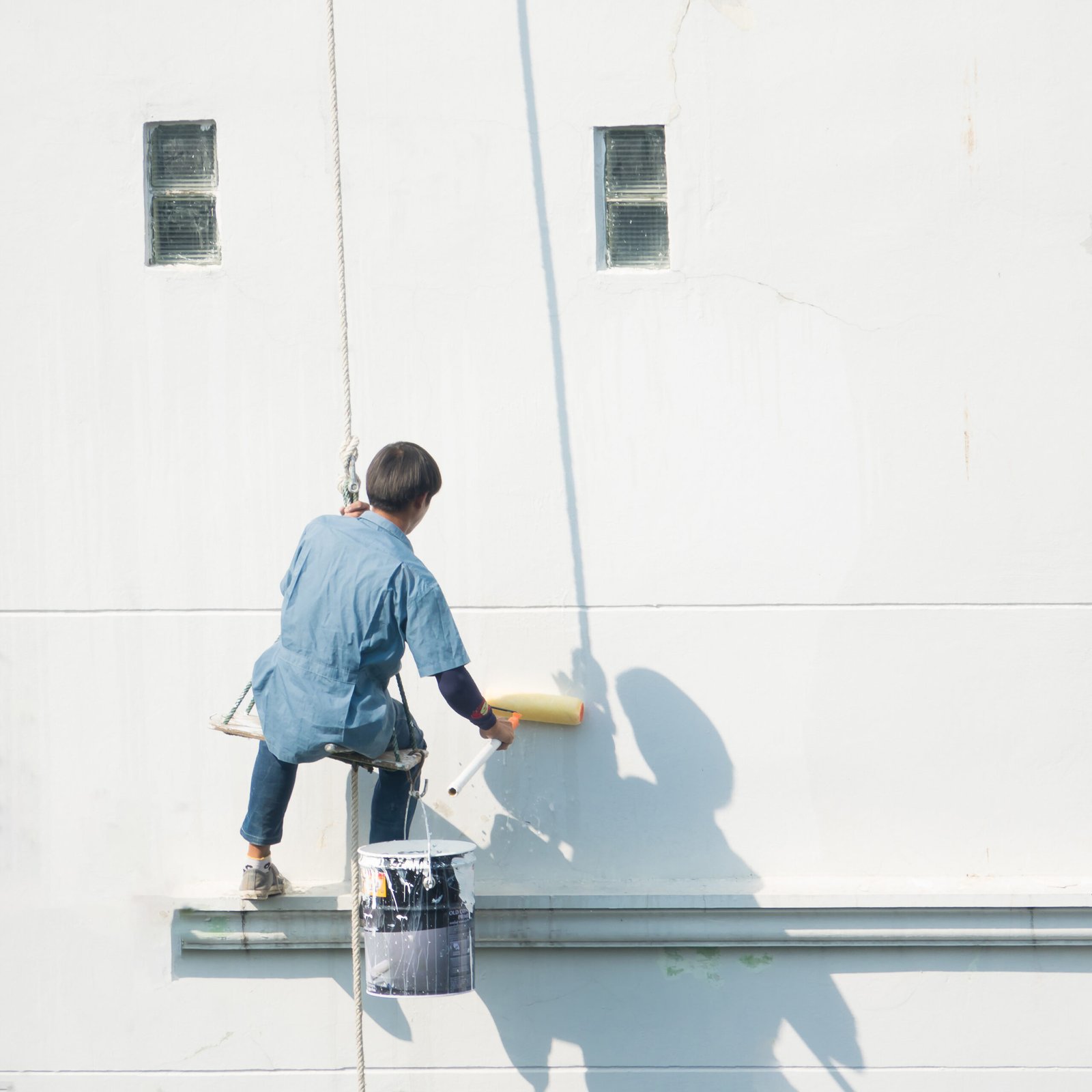
Smart landscaping and external maintenance are critical but often overlooked strategies in mold prevention. These practices focus on controlling moisture around your home’s exterior, preventing water from seeping into your foundation, walls, and basement, which can lead to mold growth indoors. By carefully planning your landscaping and maintaining the exterior of your home, you can create an environment that naturally repels moisture and keeps mold at bay.
First, consider the slope of your property. The ground should slope away from your home’s foundation to encourage water to flow away from the building, rather than pooling around it. This can be achieved through grading your landscape, a process that might require professional help but is invaluable in preventing water damage and mold growth. Caption for Illustration: “Grading Your Landscape for Effective Water Diversion”
Gutters and downspouts play a pivotal role in managing roof runoff. Ensure they are clean and free of debris to prevent blockages that can cause water to spill over the sides and pool around your foundation. Extend downspouts at least 5 feet away from your home to direct water further away from the foundation. Installing gutter guards can also help keep your gutters clear and functional throughout the year.
Your choice of plants and their placement can also influence moisture levels around your home. Use native plants that require less watering and are better adapted to your local climate. Avoid planting too close to the foundation, as this can retain moisture and encourage water to seep into your home. Instead, create a buffer zone of gravel or other porous materials around your home’s perimeter to enhance drainage and reduce humidity levels near your walls.
Mulching is a common landscaping practice, but it’s important to use it wisely. While mulch can help soil retain moisture, which is beneficial for plants, it can also retain moisture against your home’s foundation if applied too liberally or too close to the structure. Keep mulch at least 6 inches away from siding to prevent unwanted moisture buildup that could lead to mold.
Watering your lawn and garden is necessary, but overwatering can contribute to excessive moisture around your home. Utilize drip irrigation systems or soaker hoses that deliver water directly to the roots of your plants, minimizing water waste and reducing surface moisture that can evaporate and increase humidity around your home.”
Lastly, maintaining your home’s exterior surfaces, including siding, roofing, and paint, can prevent water intrusion. Regularly inspect these areas for cracks, damage, or wear and address issues promptly. Seal any gaps or cracks in your home’s exterior to keep moisture out and prevent mold from finding a way inside.
By implementing these smart landscaping and external maintenance practices, you can significantly reduce the risk of mold growth in your home. These strategies not only contribute to a healthier indoor environment but also enhance the curb appeal and longevity of your property.
Why Bio On is Your Go-To Solution for Mold Prevention Treatments
Bio-On stands as your premier mold solution, bringing unparalleled expertise and comprehensive services to tackle any mold challenge. Our team, equipped with state-of-the-art technology and deep knowledge of mold remediation, ensures your space is not only treated for mold but also safeguarded against future growth. We specialize in a range of services from mold remediation to deep cleaning and odor removal, offering tailored solutions to meet the unique needs of your home or business.
Beyond mere treatment, we prioritize preventive measures, educating our clients on maintaining mold-free environments. Our commitment to excellence and customer satisfaction makes us the trusted choice for those seeking effective and lasting mold solutions. Click the consultation button for a 24/7 free consultation with the Bio-On team, and let us restore the health and comfort of your space.
Conclusion
In summary, effective mold prevention and control are essential for maintaining a healthy living environment. By implementing strategies such as proper ventilation, using mold-resistant products, regular inspection and maintenance, deep cleaning practices, and smart landscaping, you can significantly reduce the risk of mold growth in your home. These measures not only safeguard your health but also protect the structural integrity of your property. Should you encounter mold or wish to prevent it proactively, Bio On is here to assist. We invite you to reach out to our team through the WhatsApp button for a free consultation, where we can provide personalized solutions to meet your specific needs. Let Bio On help you maintain a mold-free, healthy home.








